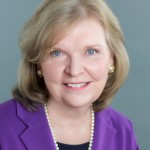Alice Pomidor, MD, MPH, AGSF
Professor
Florida State University School of Medicine
Mary Palmer, PhD, RN, FAAN, AGSF
Helen W. and Thomas L. Umphlet Distinguished Professor in Aging
UNC School of Nursing
Many of today’s older adults grew up during a time when mental health problems were not as well understood as they are today. People didn’t discuss problems like depression, for example, and many people considered mental health issues as “weaknesses” that could be cured by simply improving one’s attitude.
Now, of course, we understand that good mental health and good physical health are equally important to our well-being. Experts understand that mental health challenges are treatable. You can improve the quality of your life, or that of an older adult you care for, by making sure healthcare professionals address any potential mental health issues.
Mental Health Problems: Common Among Older Adults
Among adults aged 65 and older, about one in five have a mental disorder, including dementia. Over 50% of people living in long-term care facilities have some form of cognitive impairment.
Other common mental health problems that affect older adults include anxiety and mood disorders, such as depression and bipolar disorder.
Even though older adults commonly have mental health issues, they are less likely than younger adults to receive treatment for them. When they do receive treatment, it’s also less likely for them to see a mental health specialist. More often, older adults seek mental health treatment from their primary care providers. Continue reading





